Search
Search Results
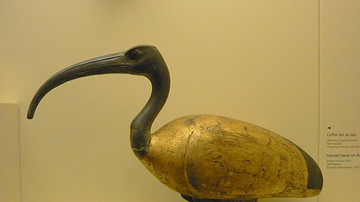
Image
Ibis Coffin from Ancient Egypt
Ancient Egyptian coffin, made of bronze and gilded wood for an ibis, found at Hermopolis, Egypt, Ptolemaic Period (323-30 BCE).
Royal Ontario Museum, Toronto.
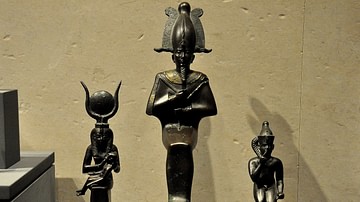
Image
Divine Family from Ancient Egypt
Bronze collection of divine figures: the goddess Isis (left) with the child Horus, the god Osiris (middle), and the god Harpokrates (right) wearing the double crown. Egypt, Saite period to Ptolemaic period, 7th to 4th centuries BCE. State...
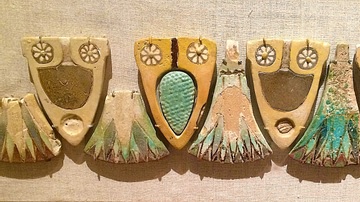
Image
Floral Frieze from Ancient Egypt
Although the use of glazed tiles and colored paste inlays is known from as early as the Old Kingdom, the apogee of their use came during the New Kingdom. An almost identical frieze of lotuses, other flowers, and grape clusters is known to...

Quiz
Daily Life & Afterlife in Ancient Egypt
Afterlife Book of the Dead Canopy Class Coffin Texts Domestic Cult Field of Reeds Heka Kites of Nephthys Ma'at Nomarch Pyramid Texts Rite Scribe Senet Shabti Dolls Silo Veneration Vizier

Image
Map of Ancient Egypt from 1742 CE
Celarius, 1742.
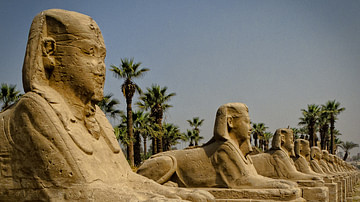
Definition
Thebes (Egypt)
Thebes was the capital of Egypt during the period of the New Kingdom (c.1570-c.1069 BCE) and became an important center of worship of the god Amun (also known as Amon or Amen, a combination of the earlier gods Atum and Ra). Its sacred name...

Image
Beer Brewing in Ancient Egypt
Painted wooden model group: four figures preparing food and beer. 6th Dynasty, Sidmant, Egypt.
British Museum, London.

Image
Preserved Baskets of Spices, Ancient Egypt
Baskets of spices and condiments, including tarragon, cumin and lard, from the tomb of Kha, Deir el-Medina, Egypt, c. 1425-1353 BCE.
Museo Egizio, Turin.
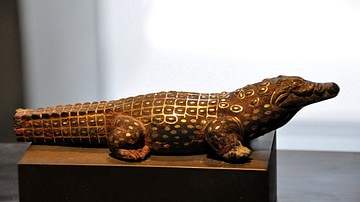
Image
Crocodile Statue from Ancient Egypt
Copper cult statue of a crocodile from Faiyum, Middle Kingdom of Egypt, 12th Dynasty, circa 1800 BCE.
State Museum of Egyptian Art, Munich, Germany.
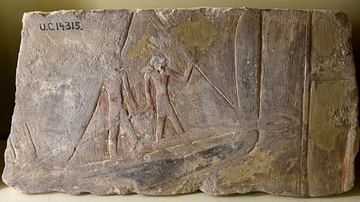
Image
Ship and Sailors from ancient Egypt
This limestone fragment depicts a prow of a ship. There are sailors, facing right; the foremost sailor holds a pole or a spear. The ship was originally painted black while the sailors were painted red. From Egypt, precise provenance is unknown...